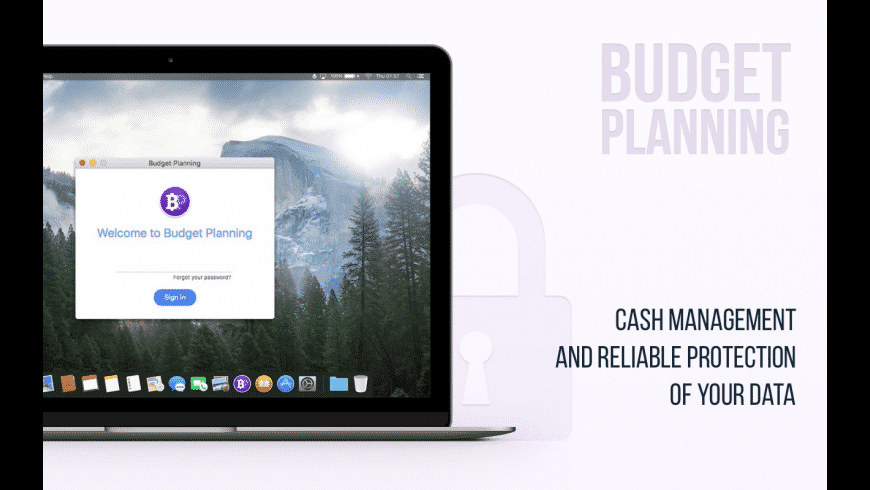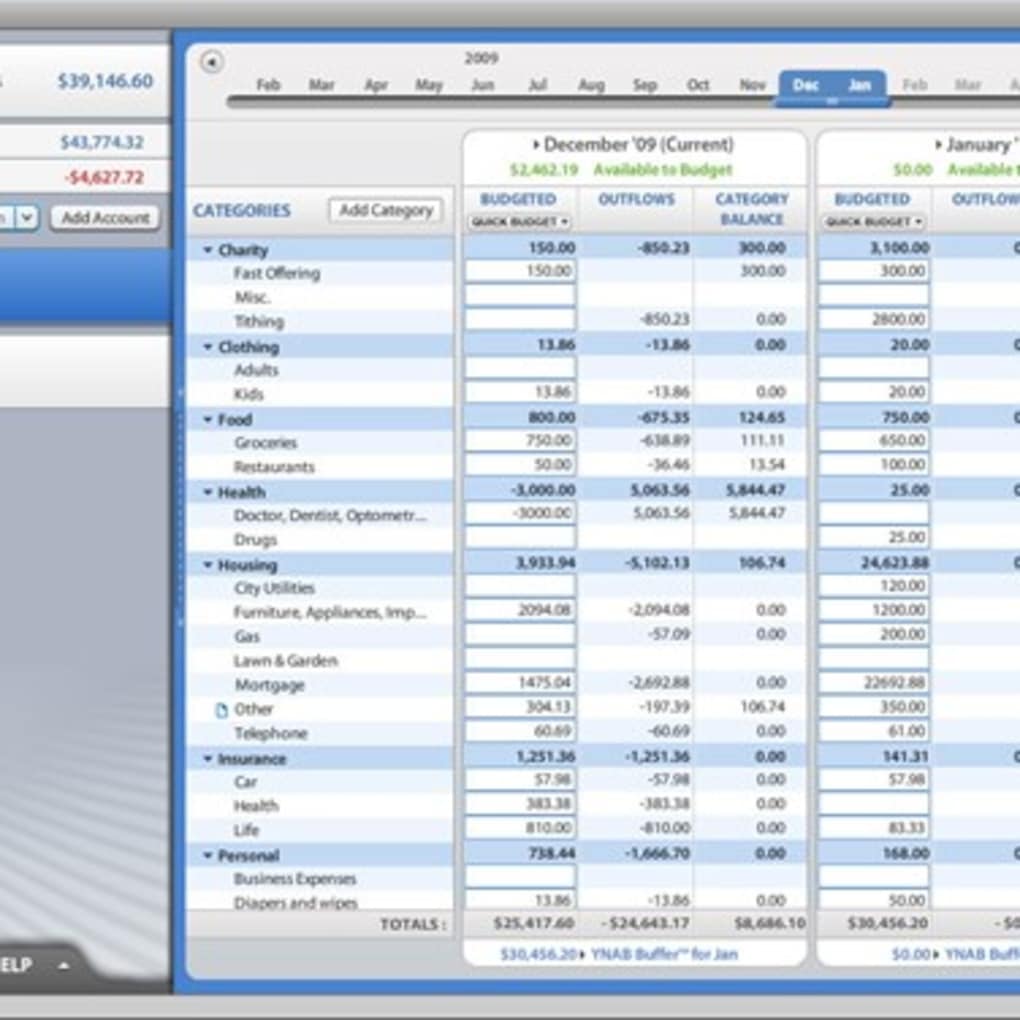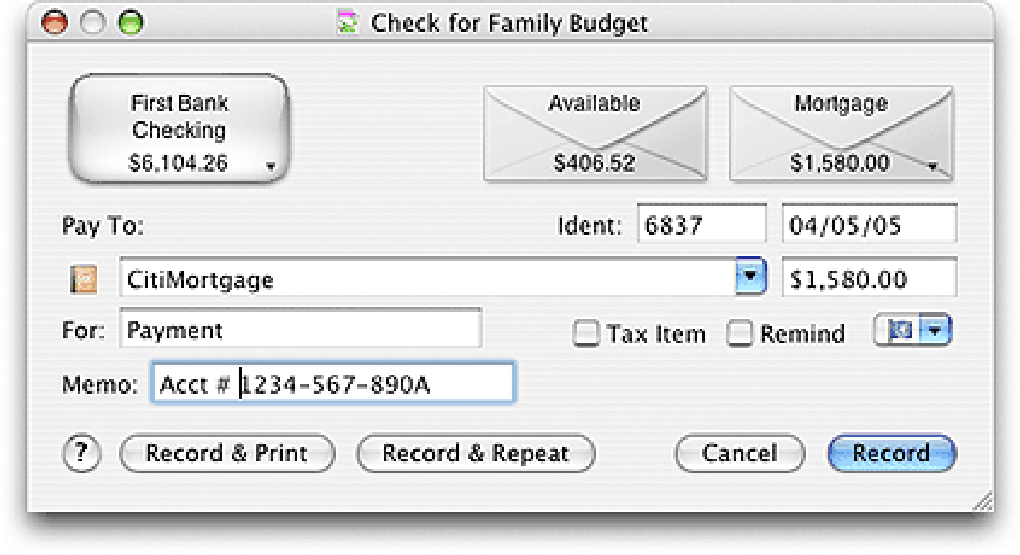- Quicken for Mac gets a lot of attention, but if you aren’t using Windows then Quicken is.
- Determine Your Goal. Before you create your budget spreadsheet, it's important to know your.
- While budgeting apps and software are popular, you don't need anything more than a pen and some paper to write a budget. 'To get started, you need to write down all of your expenses, from your.
The ‘envelope budgeting’ feature looks pretty nice and would certainly be useful. Priced a bit cheaper than iBank, it’s definitely a good alternative, but again it’s Mac only. Budget – $39.95 – I have smart friends that swear by Budget, so apparently it’s a great app. It’s certainly feature rich and full of stellar reviews.
Budgeting is a discipline that’s not often met with excitement. Many assume that budgeting is something reserved for companies or, say, freelance workers. However, personal budget software is just as important as corporate one — it’s a fundamental understanding of where money is coming and going.
You may consider it to be boring, tiring, time-consuming, or difficult, but managing your finances well can help you achieve goals and stave off the stress of a rainy day. Thankfully, there are tools and apps on Mac which can help you get on top of budgeting, no matter how experienced you are.
Why Should I Use Budget Tracking Software?
If you haven’t done a budget before, you should start now. You never know when you might need a particular sum of money to solve an issue, meet a goal, or take advantage of a sudden opportunity.
Budget programs help you reduce the stress and uncertainty that comes with not knowing where you stand financially. If you don’t have a home budget software, you might be tracking towards a situation where you run out of money, without even knowing it. If you do have a budget, then you’ll have a documented plan of action to improve your situation.

Importantly, you don’t need any qualifications to do a budget, nor do you need to be good with numbers. Take advantage of the best budget software for Mac to help you take control of your finances without the hassle. Budgeting tools come in many shapes and sizes, so selecting the right one for you depends on personal preference and previous experience with managing money.
Handy tips for budgeting tools
If you’re ready to start your budget, it’s best to consider a strategic approach to ensure maximum utility. Too often, budgets sit collecting dust after being created, and sometimes the act of creating a budget could feel like enough to satisfy financial concerns — it’s not. Here are some tips for making the most out of your budget.
First of all, definitely use an app to help you manage a budget. App developers invest a lot of time and money into figuring out how their software can make your life easier and better, so rather than trying to understand all the nuances for yourself, let a dedicated app do it for you. There’s even some free budget software around, so you have very few excuses not to try!
If you run a business (or freelance on a side), a little bit of work each week means end of year taxes are a breeze. It’s not about doing a marathon of work in a few days, but making a habit to consistently do a little bit here and there. Try aiming for 10 minutes every few days. The best tax preparation software will also have reminders and notifications to help you achieve this goal.
It might sound contradictory, but budgeting isn’t always about getting the numbers 100% accurate. When it comes to tax preparation software — sure. But budgeting is mostly about understanding where your money is being spent and then using that information to make more informed decisions going forward. Therefore, make sure you categorize your transactions so that it’s easier to spot those minutiae differences and trends. The best finance apps should do this for you automatically.
In summary, you want to ensure you take advantage of the online budgeting tools available to you, aim to update your records frequently, and focus on categorization over accuracy.
Features of good personal budget software
The best personal budget software for Mac is easier to pin down when you know exactly what you’re looking for. Not all apps are the same — they vary by function and pricing. Generally speaking, there are a few key features you want to see in your budget software for Mac:
It should be simple and easy to add new records or transactions
Importing bank and credit card statements should be possible
Automatically synchronizing statements will take the edge off your manual inputting
Useful dashboards or visuals will help you understand your situation at a glance
You should be able to categorize your transactions into groups
Out of those five key points, the ability to import is often the most essential. Importing saves you the hassle of adding each transaction into the money management software line-by-line, which adds up to a lot of time. It’s hard enough already to schedule frequent updates to your budget, so if you can remove the largest friction point of manual entry, then you’re in a good place.
The best budget software for Mac comparison
When it comes to programs to help budget money, there are countless options. It’s easy to get lost diving deep into each budget software review, but here are some of the best available, ranging from beautifully basic to powerfully advanced.
You’ve probably heard of Quicken, given that the name has been around since the early 80s. Even then, it was known as one of the best tax software companies around. That says something about the strong product, which carries all of the basic functions you’ll need to manage your budget well.
Right away though, you might notice that the interface has become somewhat dated in comparison to the newer contenders out there. But one of Quicken’s praised features is the ability to download bank statements and have the records automatically categorized, which can drastically reduce the time it takes to input your information, so you can spend more time making sense of it. Sadly, the Mac version is somewhat limited when it comes to advanced features, unless you splash out for the Home and Business edition.

MoneyDance is very similar to Quicken in terms of its basic features, including the ability to create a budget with notifications for bills and invoices. It also allows you to make your own charts and graphs to monitor spending habits over time, which can be seen on the homepage for a quick glance of your activity. Out-of-the-box integrations with online banking services also make it easy to send payments.
Unlike Quicken, Moneydance has some more advanced features including an investment monitor, which tracks your investments and their fluctuations — a useful addition, although best for the intermediate to advanced user. The app also has a developer API system in place to allow extended functions, mostly good for power users. Importantly, security is not an issue, as Moneydance utilizes end-to-end encryption for your data to give you that extra peace of mind.
You Need A Budget, also known as YNAB, is budget tracking software that runs on both Windows and Mac via web — saving automatically to the cloud, which is a bonus for multi-platform users. It also features native apps for iOS and Android, so you can literally tackle your budget from anywhere.
The app itself follows a simple design language, which is perfect for beginners, but if you find yourself needing help you can sign up for a personal instructor. YNAB doesn’t let you slack at all, and if you start to stray from your budget, the app will raise a red flag through it’s built-in Accountability Partner.
Although YNAB doesn’t support the ability to download and automatically categorize records from bank statements, it could be argued that entering them manually helps the user pay more attention to where their spending is going. Still, it’s a more time-consuming process that might be problematic for users processing hundreds or more records each month.
MoneyWiz stays true to its name — a comprehensive budget software and investment tracker that’s packed full with over 400 useful features. View your financial situation quickly by browsing accounts, groups, or searching for individual records. Speaking of records, you can enter them manually or have them automatically sync with leading banks, cryptocurrency exchanges, and financial services for an accurate real-time understanding of your accounts.
With all of this data in hand, MoneyWiz can prepare and export over 50 reports to help you gain deeper insights into your finances. Your data could be accessed from its cloud-based app or straight from the native software for Mac. All in all, MoneyWiz is extremely powerful: accessible for beginners and interesting for the most advanced users.
Receipts is yet another money management software for Mac, and is specifically well-known for its clever handling of invoicing. Using Optical Character Recognition (OCR) technology, Receipts automatically reads and translates important information about your bills, such as amount, date, currency, and more (even if the text is in another language).
Besides, Receipts can issue payments for invoices directly using third-party providers, such as iFinance and BankX. The OCR technology alone makes it a strong contender against other more simple online budgeting tools. Not least, Mac users will be glad to see how this application was designed to look and feel like a macOS product. Using a familiar user interface could make life a little easier after all.
/ibank-5-scheduled-transactions-56a2f1363df78cf7727b40b5.png)
Between the five options above, you have a strong starting point for your budgeting tools depending on your experience. Remember that importing is one of the key features to look for in budget programs. Still, in order to find the best fit you might need to try a couple of different options.
Thankfully, both MoneyWiz and Receipts have a free 7-day trial that you can take advantage of by heading over to Setapp, an app subscription service for Mac that gives you access to over 150 macOS apps, including all the necessary budget tools. Getting MoneyWiz and Receipts at once? You won’t be disappointed.
Meantime, prepare for all the awesome things you can do with Setapp.
Read onSign Up

A lot of people wonder how much of their income they should spend on their home, vehicle, groceries, clothes, etc. Below are some guidelines to give you a general idea and provide you with a starting point for your budget. Based on your income, family circumstances, and the part of the country you live in, your allocations may be very different.
To work with these budgeting guidelines, begin by developing your budget with the money you have available after government deductions from your pay cheque, but before voluntary deductions such as RRSPs, pensions, or other savings. If you have expenses such as high debt payments, childcare, school expenses, or giving, you will need to reduce your spending in other areas to allow for these higher expenses.
Breakdown of Cost of Living Budgeting Categories
- Housing: 35%
mortgage / taxes / strata / rent/ insurance / hydro - Utilities: 5%
phone / cell phone / gas / cable / internet - Food: 10 – 20%
groceries / personal care / baby needs - Transportation: 15 – 20%
bus / taxi / fuel / insurance / maintenance / parking - Clothing: 3 – 5%
for all members of the family - Medical: 3%
health care premiums / specialists / over-the-counter - Personal & Discretionary: 5 – 10%
entertainment / recreation / education / tobacco/alcohol / eating out / gaming / hair cuts / hobbies - Savings: 5 – 10%
Plan to save money for expenses that don’t occur every month, as well as for your future. Then you’ll have a little extra available when you need it. - Debt Payments: 5 – 15%
Many people find that their budget is quite tight when their monthly debt payments are close to 23% of their net income.
How to View These Budgeting Guidelines
These guidelines have been created for someone who really needs to put together a tight budget. If finances aren't strained in your household, you can decide to be more relaxed and go beyond the guidelines in areas as long as you're doing two things: 1) you're not spending more than you earn, and 2) you're allocating some money towards savings (savings are absolutely necessary for life's many unexpected expenses. Don't rely on credit for these unexpected expenses. Rely on money you've saved).
The category in these guidelines that people will most commonly exceed is the Personal & Discretionary expense category. The guidelines suggest you spend 5 - 10% of your income in this category. However, if you happen to have young children in daycare, have high education costs, take nice vacations, tithe, or have hobbies or recreational interests that aren't cheap, you'll quickly exceed the suggested maximum for this category. Please know there is nothing wrong with exceeding this limit as long as your budget balances (your expenses don't exceed your income).
You may also notice that if you spend the maximum amount in every category, you'll exceed 100% of your income. These guidelines are only recommended ranges. Life is all about choices, but you can't choose the maximum amount in all spending categories. Spending more in one category may mean that you'll have to cut back in another category to make your budget balance. If you live in Canada's far north or in a city where homes are very expensive, you may have to cut back more than an average Canadian would in certain categories in order to afford your higher living costs. In these cases, you will most likely exceed the suggested maximum guidelines for Food or Housing.
The Easiest Way to Use The Guidelines
To make budgeting easier, we've built these budgeting guidelines into an Excel Budgeting Calculator Spreadsheet provided through our educational website, MyMoneyCoach.ca.
As you enter your living expenses, the interactive spreadsheet will calculate all the spending guideline numbers for you. It also visually compares your spending in each category to these guidelines so that you can see how you're doing. As you fill out the budget spreadsheet with your living expenses, it warns you if you are exceeding the guidelines in any area of your budget, and visually shows you how your spending falls into these guidelines. It basically guides you through the process of creating a budget and suggests spending amounts for every budgeting category listed above based on your income and family size. When you're done, it also shows you what your budget looks like in a pie chart divided into the various expense categories.
On top of all this, the budgeting calculator offers you tons of helpful suggestions and tips along the way, so that you can avoid the common pitfalls of the budgeting process.
Budgets For Marketing Plans
Check out the Budget Calculator for yourself! It's free and easy to use - even if you've never used Excel before. You can also download it for the Mac or OpenOffice (free open source office software) if you don't have Excel on your computer.
